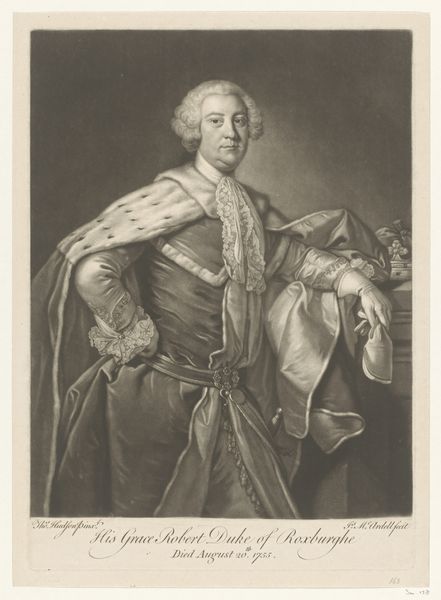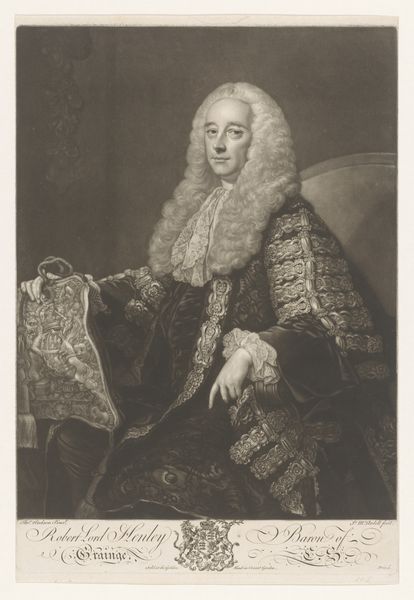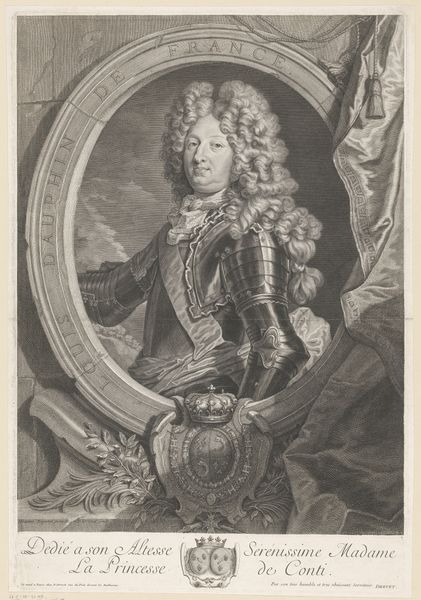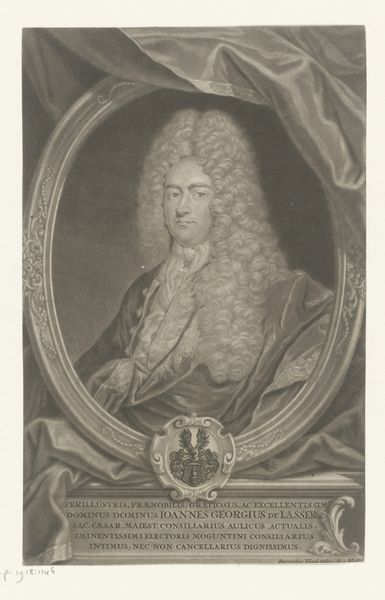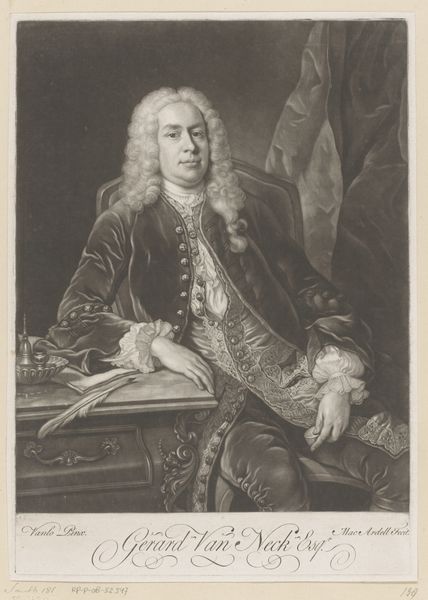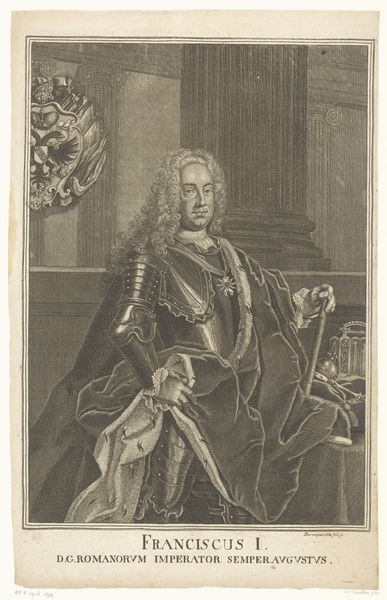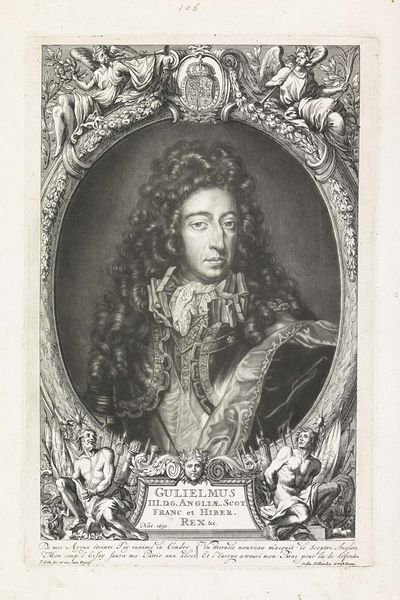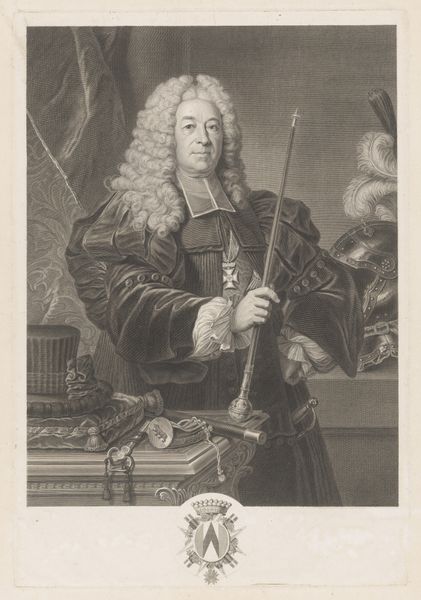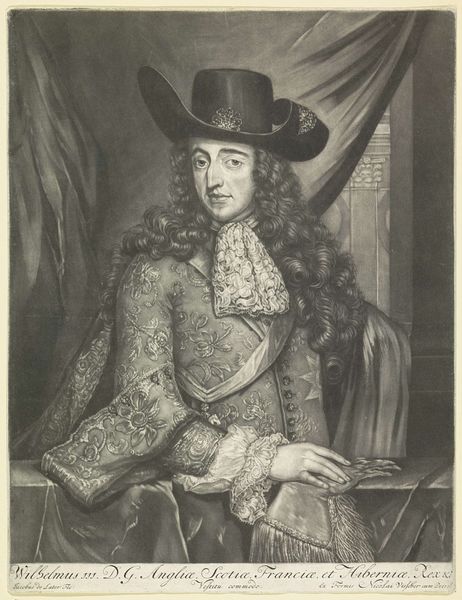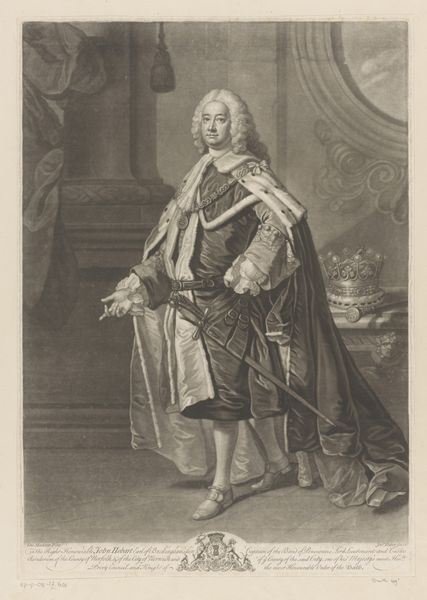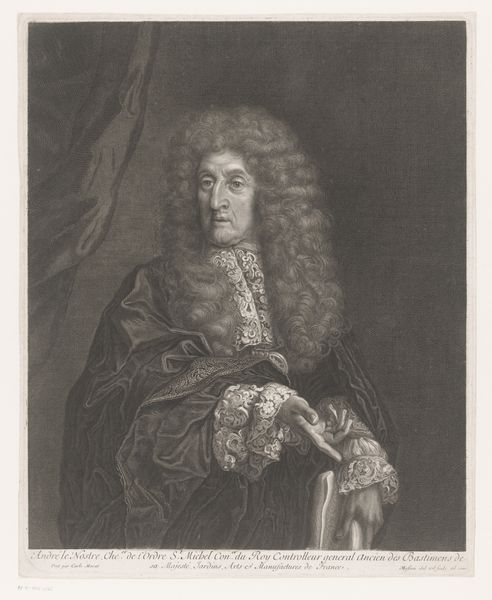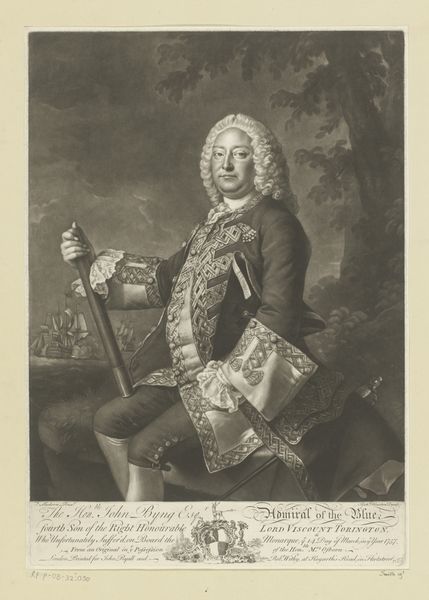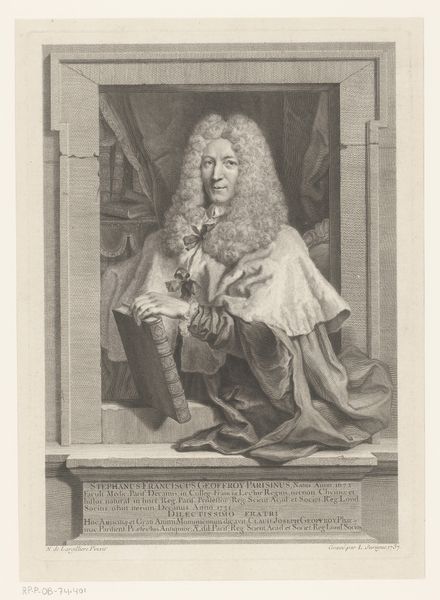
engraving
#
portrait
#
baroque
#
figuration
#
historical photography
#
15_18th-century
#
line
#
history-painting
#
engraving
Dimensions: height 388 mm, width 275 mm
Copyright: Rijks Museum: Open Domain
Curator: Looking at this engraving from somewhere between 1745 and 1765, I'm immediately struck by its stillness and formality. The subject's gaze is direct, almost confrontational, yet there’s also a sense of removed grandeur about it. Editor: Yes, this is James McArdell's "Portret van Thomas Pelham-Holles," now in the Rijksmuseum's collection. It portrays Thomas Pelham-Holles, Duke of Newcastle, a prominent political figure in 18th-century Britain. It offers us so much in regards to visualizing masculine identities during that era, especially within contexts of class and state power. Curator: The costume is a language unto itself. The ornate wig, the rich fabrics, the suggestion of power with the decorative details… I wonder what social and political messages were at play through McArdell's detailed, very labor-intensive piece. It feels like propaganda, yet much more interesting. Editor: Absolutely. Consider that this engraving served not just as a portrait but as a carefully constructed representation of power and authority. These portraits of political leaders often appeared in print form, circulated widely to bolster their image, particularly in times of shifting allegiances and contested authority. How would people react now if these kinds of displays were still necessary? Curator: Precisely! It’s a carefully crafted performance of aristocratic masculinity. The way Pelham-Holles is situated, almost enthroned in that decorative chair, it speaks to an air of absolute dominance, perhaps suggesting an unquestioned place within the social order. I notice the subtle hand gesture too... a kind of contained strength. How fascinating that these are things we can "read." Editor: And we shouldn't forget the Baroque influence. The engraving uses dramatic lighting and rich detail, aligning him to the long legacy of power in European courts. The line work itself, which appears almost obsessive, speaks to the era's dedication to elaborate forms and intricate design. I think McArdell captures that tension perfectly through an adherence to "realistic" imagery with the Baroque artistic style. Curator: Seeing this portrayal of Pelham-Holles in light of contemporary discussions surrounding power and representation is also important. How might different audiences, especially those historically excluded from these centers of power, respond to this image now? I wonder about the ongoing negotiation of portraiture in our modern landscape. Editor: Reflecting on this piece, I am struck how it allows us to see portraiture, not just as the passive depiction of elites, but rather an active agent in the constant shaping of public image and consolidating political and social hierarchies. It also makes me realize the long traditions we need to be aware of as we make art now.
Comments
No comments
Be the first to comment and join the conversation on the ultimate creative platform.
